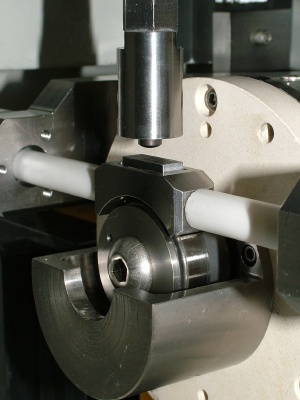Nov 4 2008
Lubricants in bearings and gear units ensure that not too much energy is lost through friction. Yet it still takes a certain percentage of the energy to compensate for friction losses. Lubricants made of liquid crystals could reduce friction to almost zero.

Passengers check in their suitcases, which are automatically transported away by conveyer belts; moving walkways and escalators run for hours without a break – thousands of gear units rattle away at the major airports. The power consumption is tremendous, in the range of several gigawatt hours per annum. A substantial amount of this is lost through friction. In wind turbines and in cars, too, a percentage of the energy is spent on friction – reducing the efficiency factor accordingly. Novel lubricants that almost eliminate the effect of friction could be the answer. Once they have been set in motion, the bearings run and run and run.
But what makes the new lubricant different from the oils that were used to lubricate bearings until now? “This lubricant is made from liquid crystals like the ones we know from flat-screen monitors,” explains Dr. Andreas Kailer, head of department at the Fraunhofer Institute for Mechanics of Materials IWM in Freiburg. “In contrast to normal liquids, the molecules in liquid crystals have a certain orientation – you might compare them to matches with their heads all pointing in the same direction.” In a joint project with the Fraunhofer Institute for Applied Polymer Research IAP in Potsdam and the Mainz-based company Nematel, the IWM researchers are investigating which liquid crystals are most suitable for use as lubricants, and under what conditions. Their testing unit exerts a certain amount of force on a clamped metal cylinder that is moved back and forth over a supporting contact surface. With which lubricant does the machine require the smallest amount of energy to move the metal cylinder?
While the friction hardly changes when using conventional oil, it drops to almost zero after a while when liquid crystals are used. The time that this takes depends primarily on the pressure with which the moving cylinder is pressed against the contact surface. If you were to compare it to a toboggan, it would correspond to the weight of the child sitting on it. “Liquid crystals have not been suitable as a lubricant for ball bearings until now, as the contact pressure is too high – the friction does not drop far enough. “For slide bearings, on the other hand, liquid crystals are the perfect solution,” says Kailer. Since liquid crystals have been produced mainly for monitors up to now, they have to be ultra-pure – which makes them very expensive. So the researchers now plan to simplify the synthesis process, since less pure substances are also suitable as lubricants,. “We hope to be able to market a liquid crystal lubricant in three to five years’ time,” says Kailer.